A Guide to Drawing and Painting Realism
This article explores techniques, materials, and tips for achieving realistic drawings and paintings, offering insights for both beginners and experienced artists aiming to enhance their skills in realism.
Realism is an artistic movement that emerged in the mid-19th century, characterized by a focus on depicting subjects as they appear in everyday life. Unlike the idealized forms of Romanticism, realism strives to represent the world with accuracy and honesty. This movement not only changed the way artists approached their subjects but also influenced the viewer's perception of art. By capturing the mundane and the ordinary, realist artists like Gustave Courbet and Jean-François Millet challenged the conventions of their time, emphasizing the beauty found in the commonplace. The significance of realism in the art world cannot be overstated; it laid the groundwork for modern art movements and continues to inspire artists today.
Choosing the right materials is crucial for achieving realism in your artwork. The tools you select can significantly impact the final outcome, influencing the texture, depth, and overall feel of your piece. Here are some essential materials that every realist artist should consider:
Graphite pencils are fundamental for drawing realism. They come in various grades, allowing artists to create a range of effects from fine details to deep shadows. Understanding the different grades of pencils and their applications is key to mastering shading and detailing in realistic drawings.
Graphite pencils are categorized into different types based on their hardness and softness, which affects the darkness of the marks they make. Here’s a breakdown:
| Type | Characteristics |
|---|---|
| H Pencils | Harder, lighter marks; ideal for fine lines and details. |
| B Pencils | Soft, darker marks; perfect for shading and depth. |
| F Pencils | Intermediate; good for general use. |
Blending is essential for achieving smooth transitions in your realistic drawings. It helps to create depth and dimension, making your artwork come alive. Various tools can aid in blending, such as tortillons and blending stumps. Using these tools effectively can elevate your work to a new level of realism. Remember, blending isn't just about smudging; it's about understanding how light interacts with surfaces and replicating that in your art.
When it comes to painting, the choice of medium can drastically affect the realism of your artwork. Each medium has its unique properties that can contribute to realistic effects. For instance, oil paints offer rich colors and a slow drying time, allowing for intricate blending and layering. Acrylics dry quickly, making them suitable for artists who prefer to work rapidly, while watercolors can produce delicate washes and ethereal effects. Understanding these mediums will help you select the right one for your project.
Mastering techniques such as observation, proportion, and color mixing is vital for creating realistic art. These skills are not innate; they require practice and dedication. One of the best ways to improve is through consistent practice, focusing on the details and nuances of your subjects.
Developing keen observation skills is crucial for realism. It’s not just about seeing; it’s about truly observing the subtleties of light, shadow, and form. Exercises such as drawing from life or using reference photos can sharpen your ability to see and replicate details accurately. The more you practice, the better you’ll become at capturing the essence of your subjects.
Understanding proportions is fundamental in realistic art. It’s like building a house; if the foundation is off, everything else will be too. Methods for measuring and scaling subjects, such as using a grid or sighting techniques, can help maintain accurate proportions in your work. This attention to detail is what sets realistic art apart from other styles.
As you embark on your journey to mastering realism, here are some practical tips to refine your techniques:
Realism requires significant practice and patience. It’s not something you can master overnight. Dedicate time to hone your skills; the more you draw and paint, the more you’ll improve. Embrace the process, and don’t rush it. Remember, every great artist was once a beginner.
Studying the works of master realist artists can provide invaluable insights. Analyze their techniques, brushwork, and compositions to inspire your own art. You might find that what seems complex can be broken down into manageable parts, making it easier to incorporate those techniques into your own work.
Q: What is the best medium for beginners?
A: Acrylics are often recommended for beginners due to their versatility and quick drying time.
Q: How can I improve my observation skills?
A: Practice drawing from life and use reference photos to train your eye to see details.
Q: Is it necessary to use high-quality materials?
A: While high-quality materials can enhance your work, it’s more important to practice and develop your skills, especially as a beginner.
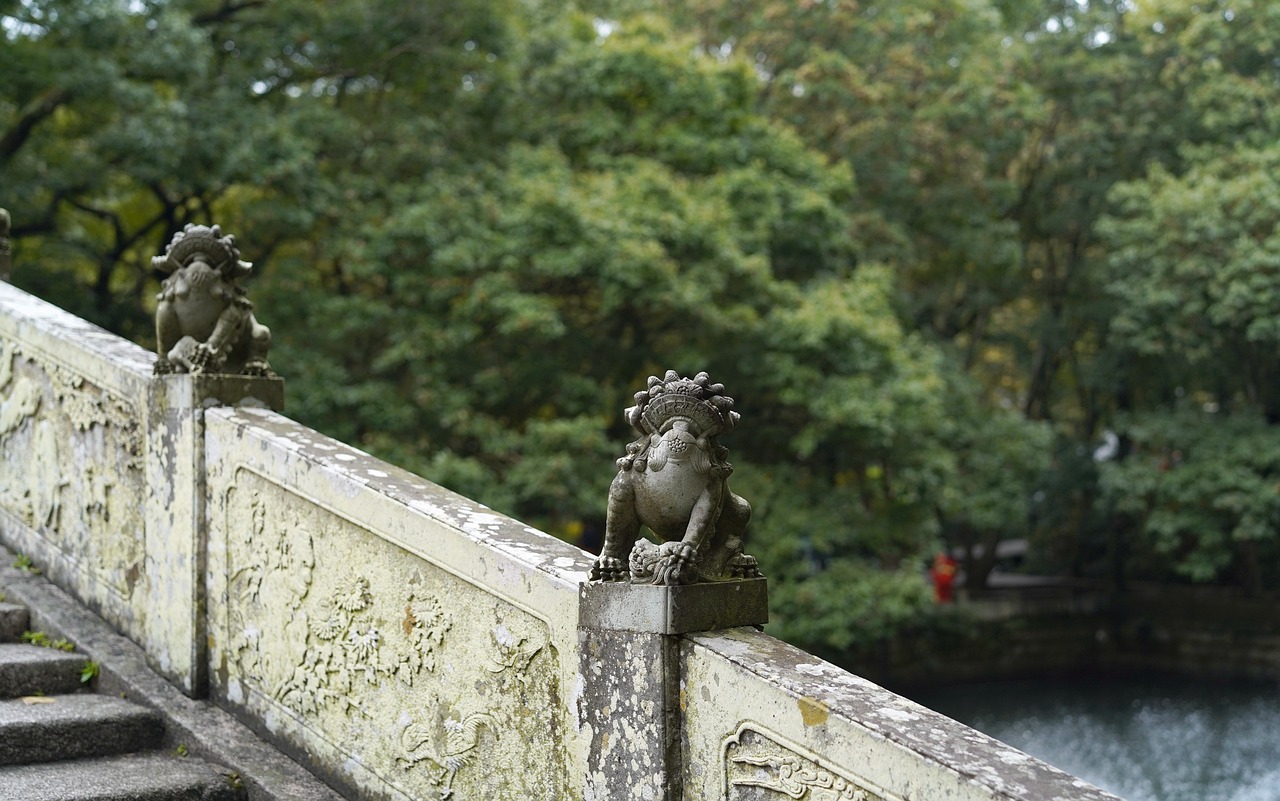
Understanding Realism in Art
Realism, as an artistic movement, emerged in the mid-19th century as a response to the romanticism that dominated the art world before it. It was a revolutionary shift, aiming to depict subjects as they truly are, rather than an idealized version of reality. Artists sought to capture the essence of everyday life, portraying ordinary people and mundane scenes with a level of detail that made them relatable and significant. The movement emphasized the importance of observation, encouraging artists to draw inspiration from their immediate surroundings. In a way, realism can be seen as a mirror reflecting the world, showcasing both its beauty and its flaws.
The significance of realism in art cannot be overstated. It paved the way for modern artistic expressions and influenced numerous movements that followed, including impressionism and social realism. Artists such as Gustave Courbet and Jean-François Millet are often credited with laying the groundwork for this movement. Their works challenged traditional norms and highlighted the lives of the working class, emphasizing the dignity of labor and the struggles of everyday existence. This focus on the common man was revolutionary, as it shifted the narrative from the elite and mythological subjects that had previously dominated the art scene.
Realism is not merely about replicating what one sees; it is about understanding the deeper context of the subjects being portrayed. This requires a keen eye for detail and a profound appreciation for the subtleties of light, shadow, and texture. Artists often engage in meticulous studies to grasp the nuances of their subjects, whether they are capturing the delicate play of light on a skin tone or the intricate patterns found in nature. The ultimate goal is to evoke a sense of authenticity that resonates with viewers, making them feel connected to the artwork on a personal level.
Moreover, realism serves as a powerful tool for social commentary. Many realist artists used their work to address pressing social issues of their time, such as poverty, inequality, and the human condition. Through their art, they were able to bring awareness to societal problems, prompting discussions and inspiring change. This aspect of realism remains relevant today, as contemporary artists continue to use realistic techniques to explore and critique modern life.
In summary, realism is an artistic movement that emphasizes the representation of subjects as they appear in everyday life. Its historical significance, focus on observation, and ability to convey social messages make it a vital aspect of the art world. As artists continue to explore and expand upon the principles of realism, they contribute to a rich dialogue that connects the past with the present, reminding us of the beauty and complexity of the world around us.

Essential Materials for Realistic Art
When it comes to creating stunningly realistic art, the materials you choose play a pivotal role. Just like a chef needs the right ingredients to whip up a delicious meal, an artist requires specific tools to capture the essence of reality on paper or canvas. Whether you’re a budding artist or a seasoned pro, understanding the essential materials can elevate your artwork to new heights. In this section, we’ll explore various tools and mediums that can enhance your ability to depict realism.
First and foremost, let’s talk about graphite pencils. These are the backbone of realistic drawing. With a range of grades available, each pencil serves a unique purpose. From the hard, fine lines of H pencils to the soft, dark strokes of B pencils, knowing which one to use can make a significant difference in your shading and detailing. The F pencils, which fall in between, are perfect for those who want a bit of both worlds.
Graphite pencils are not just simple tools; they are essential for achieving the depth and detail that realism demands. To understand how to use them effectively, it's crucial to grasp the characteristics of different pencil types:
| Type | Characteristics | Best For |
|---|---|---|
| H Pencils | Hard, produces light lines | Fine details, light shading |
| B Pencils | Soft, produces dark lines | Shading, deep shadows |
| F Pencils | Medium hardness | General use |
Next up are blending techniques, which are vital for creating smooth transitions in your drawings. Blending allows you to mimic the soft gradations found in nature, making your artwork appear more lifelike. Tools like tortillons and blending stumps are excellent for this purpose. They help you to seamlessly merge different shades, creating a soft and realistic effect. To practice blending, try layering different grades of graphite and then using a blending tool to smooth out the transitions. This technique can make a world of difference in your final piece.
Now, let’s shift our focus to painting mediums. Whether you prefer oil, acrylic, or watercolor, each medium has unique properties that can contribute to realistic effects. For instance, oils provide a rich texture and allow for extended blending time, making them ideal for capturing intricate details. Acrylics, on the other hand, dry quickly and are perfect for building layers, while watercolors offer a delicate transparency that can depict light beautifully.
In summary, the materials you choose are crucial in your quest for realism in art. By selecting the right pencils for drawing and understanding the properties of various painting mediums, you can create stunning pieces that truly capture the essence of your subjects. Remember, the journey to mastering realism requires not only the right tools but also practice and experimentation. So, gather your materials, and get ready to bring your artistic visions to life!
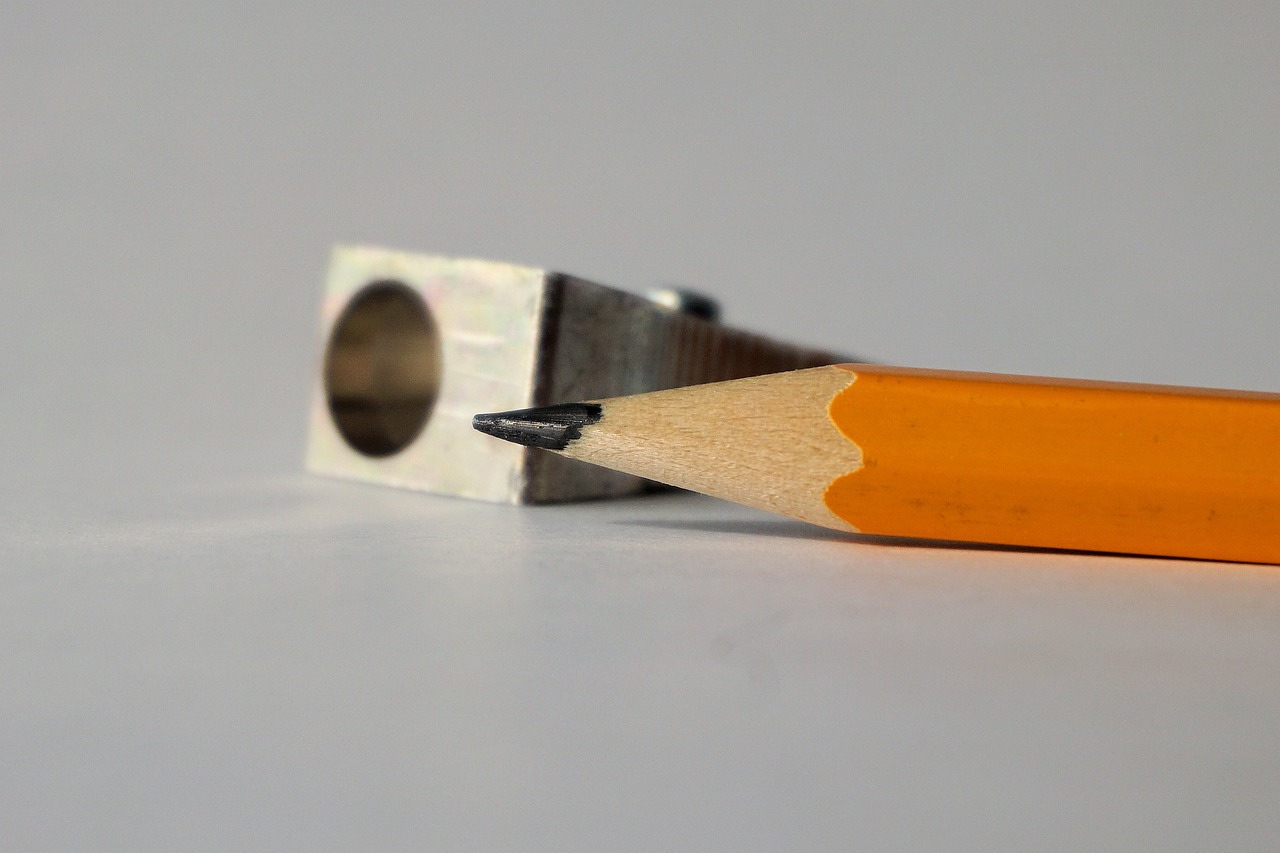
Graphite Pencils
When it comes to creating realistic drawings, are your best friends. These versatile tools allow artists to express intricate details and subtle shading, making them essential for anyone aiming to capture the essence of realism. But not all graphite pencils are created equal, and understanding the different grades can significantly impact your artwork. The grading system, which ranges from H (hard) to B (soft), determines how dark or light your lines will be, and knowing when to use each type is crucial.
Graphite pencils are categorized based on their hardness and darkness. The H pencils are harder and produce lighter marks, making them ideal for fine lines and detailed work. Conversely, the B pencils are softer and allow for darker, richer strokes, perfect for shading and creating depth. The F pencils fall somewhere in between, offering a balance that can be useful for various applications. Here’s a quick breakdown:
| Type | Characteristics | Best For |
|---|---|---|
| H | Hard, light marks | Fine details, precise lines |
| B | Soft, dark marks | Shading, bold lines |
| F | Medium hardness | General use, versatile applications |
Another essential aspect of using graphite pencils effectively is mastering blending techniques. Blending allows you to create smooth transitions between light and dark areas, which is vital for achieving a realistic look. You can use tools like tortillons or blending stumps to help with this process. Simply apply your pencil strokes and then gently blend them together, keeping in mind that less is often more. Too much pressure can lead to over-blending, which can muddy your work and detract from the realism you’re trying to achieve.
Incorporating various pencil grades into your practice can open up a world of possibilities. For instance, using a harder pencil for initial outlines can help maintain precision, while switching to a softer pencil for shading can add depth and dimension. Don't hesitate to experiment with layering different grades to see how they interact and enhance your artwork. Remember, the key to success is practice and exploration. So grab your pencils, and let your creativity flow!
- What is the best pencil for beginners? Generally, a set that includes a range of H and B pencils is ideal for beginners, as it allows for experimentation with different techniques.
- How do I choose the right pencil for shading? Softer pencils (B grades) are typically better for shading due to their ability to create darker marks and smooth transitions.
- Can I use colored pencils for realism? Yes, colored pencils can achieve realism, but they require different techniques and a good understanding of color theory.
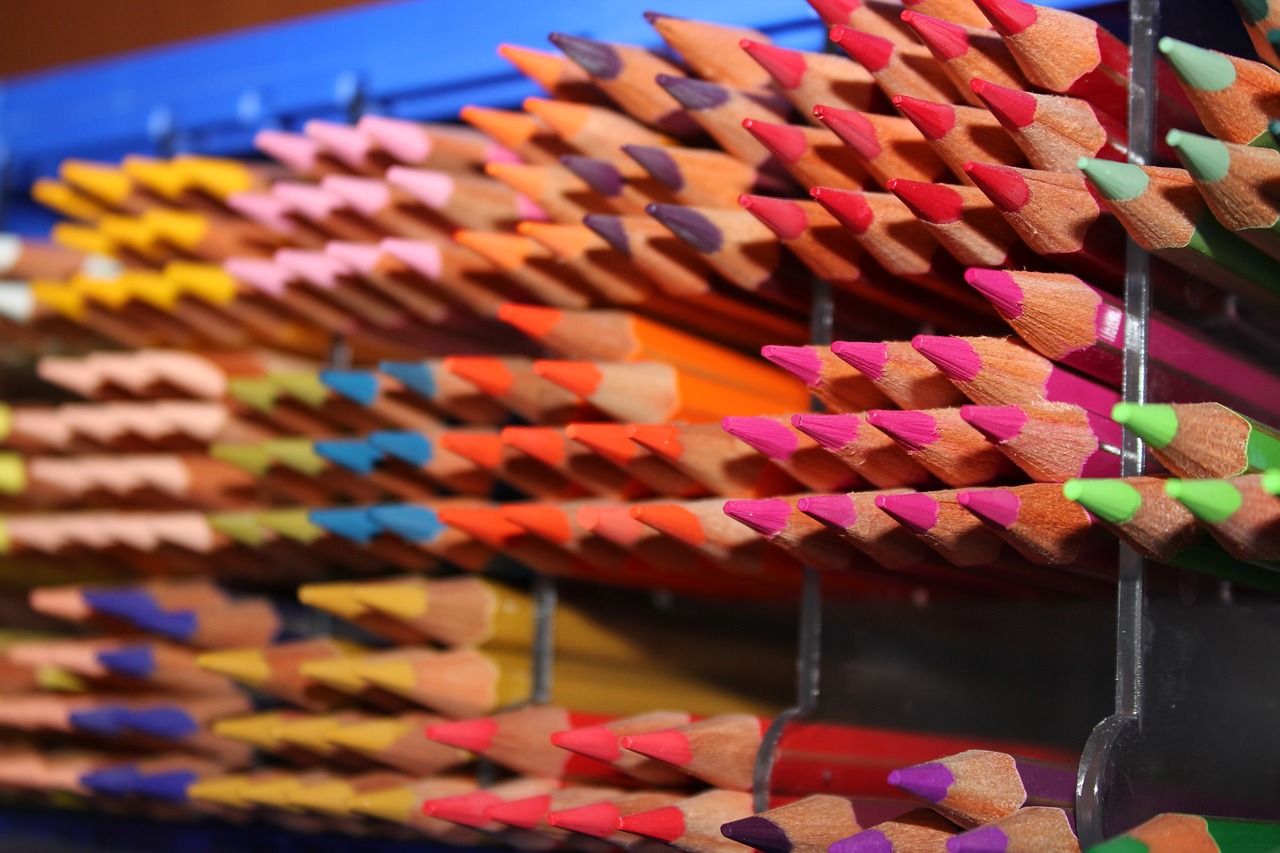
Types of Graphite Pencils
When it comes to drawing realism, understanding the different types of graphite pencils is essential for any artist. Graphite pencils are categorized based on their hardness and softness, which directly affects the darkness and lightness of the marks they produce. The grading system typically uses a combination of letters and numbers, with H representing hard pencils, B indicating soft pencils, and F standing for fine point. Let's break these down:
H Pencils are great for fine lines and detailed work. They produce lighter marks and are perfect for initial sketches where precision is key. If you're aiming for delicate shading or intricate details, H pencils are your go-to. The higher the number before the H (like 2H or 4H), the harder the pencil and the lighter the mark it makes.
B Pencils, on the other hand, are softer and darker, making them ideal for shading and creating rich, deep tones. They allow for more expressive strokes and are particularly useful when you want to convey depth and texture in your drawings. The higher the number before the B (like 2B or 6B), the softer the pencil, leading to darker, bolder lines.
F Pencils are somewhat of a middle ground. They provide a fine point that can be useful for detailed work but offer a slightly darker mark than an H pencil. They can be a great choice for artists who want a balance of precision and depth.
To give you a clearer picture, here's a quick comparison:
| Type | Characteristics | Best Used For |
|---|---|---|
| H | Hard, light marks | Fine details, initial sketches |
| B | Soft, dark marks | Shading, depth, expressive strokes |
| F | Medium hardness, fine point | Detailed work with a bit of depth |
When selecting your pencils, consider the type of artwork you want to create. A well-rounded set that includes a range of H and B pencils will give you the flexibility to tackle various techniques and styles. Remember, the key to mastering realism is not just in the materials you use, but in how you use them. Experimenting with different grades can lead to surprising results and help you discover your unique artistic voice.
- What is the best pencil for beginners?
For beginners, a set that includes a mix of H, B, and F pencils is ideal. This allows you to experiment with different techniques and find what works best for you.
- How do I choose the right pencil for shading?
Soft B pencils are generally the best choice for shading, as they create darker marks and allow for smoother transitions.
- Can I use colored pencils for realism?
While graphite pencils are typically preferred for realistic drawings, colored pencils can also be used effectively, especially when layering colors for depth.
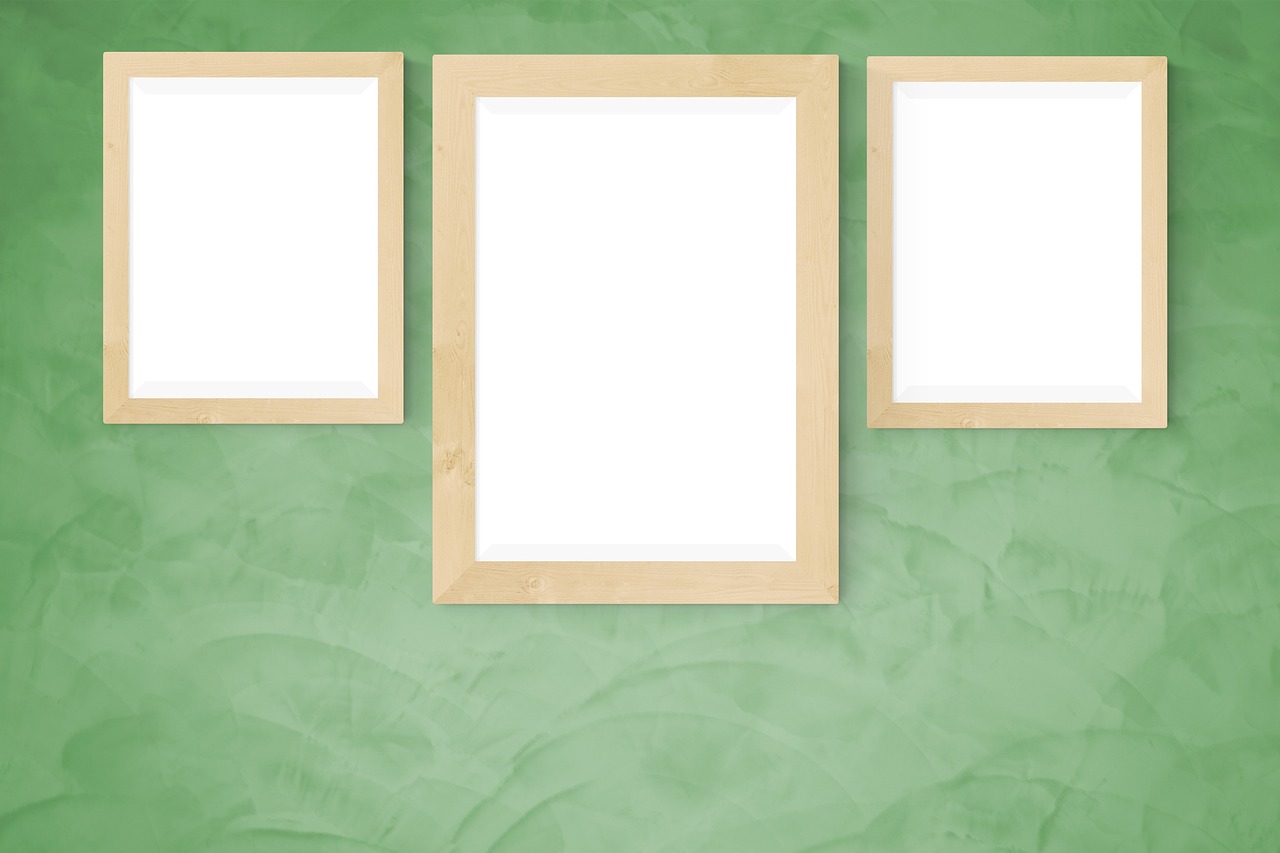
Blending Techniques
Blending is one of the most crucial techniques in achieving realism in your drawings. It allows for smooth transitions between shades and colors, creating a lifelike appearance that can truly captivate the viewer. Imagine trying to replicate the soft glow of a sunset or the intricate texture of human skin; without effective blending, these details can fall flat, leaving your artwork looking more cartoonish than realistic. To master blending, artists often use a variety of tools and techniques that can transform a basic sketch into a stunning piece of art.
One popular method for blending is the use of blending stumps or tortillons. These tools are made from tightly rolled paper and can be used to smudge graphite or charcoal, helping to create soft gradients. When using a blending stump, it’s essential to apply light pressure and work in small circular motions to avoid harsh lines. Additionally, keep a few blending tools on hand, as they can accumulate graphite and may need to be cleaned or replaced to maintain their effectiveness.
Another effective technique is finger blending. While it might seem unconventional, many artists find that their fingers can provide a unique touch that tools cannot replicate. The warmth of your skin can help to soften the graphite, creating a more natural look. However, be cautious with this method, as too much oil from your fingers can transfer to the paper, potentially damaging the surface and affecting the final outcome.
For those who prefer a more controlled approach, using a soft brush can be an excellent alternative. A brush allows for gentle application and can be particularly useful when working with pastels or colored pencils. Just as with other blending tools, the key is to use light strokes and build up layers gradually to achieve the desired effect. Always remember to clean your brushes regularly to avoid muddying your colors.
In addition to these tools, mastering the art of layering is vital for effective blending. Start with a base layer of light tones, gradually adding darker shades on top. This technique not only adds depth but also allows for better blending as the layers interact with one another. Think of it like building a cake; each layer contributes to the overall flavor and texture, creating a more satisfying result.
To summarize, here are some essential tips for effective blending:
- Experiment with different tools like blending stumps, fingers, and brushes.
- Use light pressure and circular motions for smoother transitions.
- Layer your colors gradually to build depth and complexity.
- Keep your tools clean to maintain their effectiveness.
By incorporating these blending techniques into your practice, you’ll find that your ability to create realistic artwork will improve significantly. Remember, the journey to mastering realism is a marathon, not a sprint. Each stroke, each blend, brings you one step closer to capturing the beauty of the world around you.
Q1: What is the best tool for blending graphite?
A1: Blending stumps and tortillons are highly recommended for blending graphite, as they allow for smooth transitions without damaging the paper.
Q2: Can I use my fingers for blending?
A2: Yes, many artists use their fingers for blending, but be cautious of the oil from your skin, which can affect the paper.
Q3: How do I clean my blending tools?
A3: For blending stumps, gently rub them on a piece of sandpaper to remove excess graphite. Brushes can be cleaned with soap and water.
Q4: Is blending necessary for all types of art?
A4: While blending is crucial for realism, not all art styles require it. It depends on the effect you want to achieve.
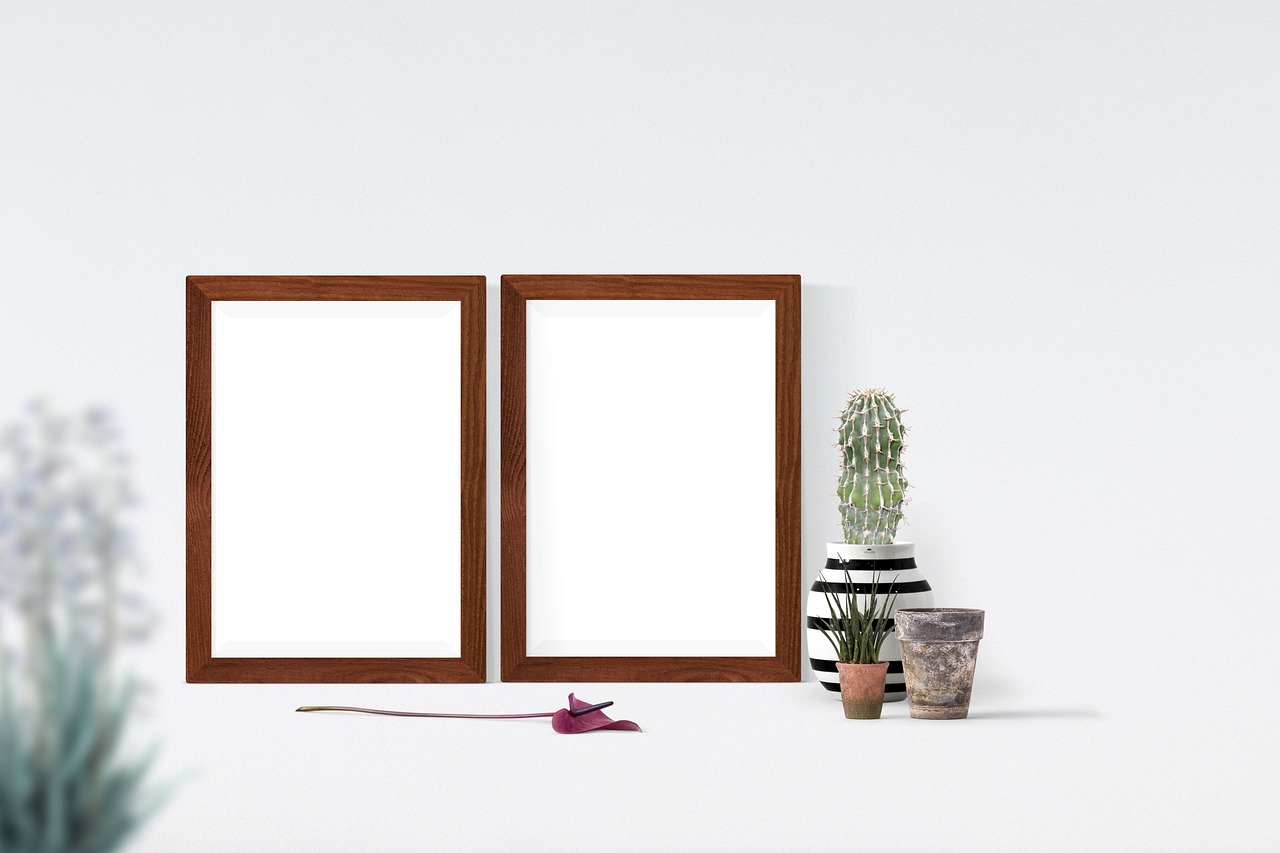
Painting Mediums
When it comes to creating realistic art, the choice of painting medium can significantly influence the final outcome of your work. Each medium offers unique properties that can enhance the realism in your paintings. Let's dive into the three most popular painting mediums: oil, acrylic, and watercolor. Understanding their characteristics will help you select the right one for your artistic vision.
Oil paints are renowned for their rich colors and versatility. They allow for smooth blending and create depth through layering. The slow drying time of oil paints gives artists the luxury to work on details over extended periods, making it easier to achieve the subtle gradations of tone and texture that realism demands. However, this also means that patience is key when working with oils, as it may take days or even weeks for a painting to dry completely.
Acrylic paints, on the other hand, are known for their quick drying time and vibrant colors. They can mimic the properties of oil paints when mixed with retarders, allowing for longer working times. Acrylics are water-soluble, which makes them easy to clean up and a popular choice for beginners. However, they can dry too quickly for some techniques, so it’s essential to work swiftly or use additives to extend drying time. One of the advantages of acrylics is their ability to create both opaque and transparent layers, which can add to the realism of your work.
Lastly, watercolor paints offer a unique approach to realism. They are known for their transparency and fluidity, allowing artists to create delicate washes and subtle color transitions. While watercolors can be challenging due to their unpredictability, they can produce stunningly lifelike effects when mastered. The key to using watercolors effectively lies in understanding how to control the water-to-paint ratio, as this will determine the intensity and transparency of the colors.
| Medium | Characteristics | Best For |
|---|---|---|
| Oil | Rich colors, slow drying, great for blending | Detailed and layered realism |
| Acrylic | Quick drying, vibrant colors, versatile | Flexible techniques and fast-paced work |
| Watercolor | Transparent, fluid, delicate washes | Soft and subtle realism |
In conclusion, the choice of painting medium is a personal one that should align with your style and the effects you wish to achieve. Whether you prefer the rich depth of oil paints, the versatility of acrylics, or the delicate touch of watercolors, each medium has the potential to bring your realistic artwork to life. Experimenting with different mediums can also lead to discovering new techniques and styles that enhance your artistic journey.
- What is the easiest painting medium for beginners? Acrylic paints are often recommended for beginners due to their quick drying time and ease of use.
- Can I mix different painting mediums? While it's possible to mix mediums, it's essential to understand their compatibility to avoid issues like cracking or peeling.
- How do I choose the right medium for my artwork? Consider the desired effects, your skill level, and the time you can dedicate to working with the medium.

Techniques for Achieving Realism
When it comes to capturing the essence of reality in art, mastering techniques is not just beneficial; it's essential. Realism in art demands a meticulous approach, where every detail matters. To achieve this level of authenticity, artists must focus on three key areas: observation, proportion, and color mixing. These foundational skills will enable you to replicate the world around you with stunning accuracy.
First and foremost, let’s talk about observation skills. Developing keen observation is like training your eyes to see the world in a new light. It's about noticing the subtleties—the way light interacts with surfaces, the textures that give depth, and the colors that bring life to your subjects. To enhance your observation skills, consider engaging in daily exercises that challenge you to replicate what you see. For instance, set aside time to draw from life. This could be anything from a simple fruit bowl to a complex scene in a busy café. The more you practice, the sharper your observational skills will become.
Next up is proportions and measurements. Understanding proportions is crucial in realistic art because it helps ensure that the elements in your artwork relate to each other correctly. A common method to maintain accurate proportions is using the grid technique. This involves dividing your reference image into equal squares and then mirroring that grid onto your drawing surface. By focusing on one square at a time, you can capture the details without becoming overwhelmed. Another technique is using a caliper or a simple pencil to measure distances and angles, allowing you to scale your subject accurately.
Finally, let’s dive into color mixing. The ability to mix colors accurately is a game-changer in achieving realism. It’s not just about having the right colors on your palette; it’s about understanding how to create the shades and tones that reflect reality. Start with a basic color wheel and experiment with mixing primary colors to create secondary and tertiary colors. Remember, colors are rarely flat; they have undertones and variations. Observing how colors shift under different lighting conditions can also greatly enhance your ability to replicate them on canvas.
In summary, achieving realism in your artwork is a journey that involves constant practice and dedication. By honing your observation skills, mastering proportions, and perfecting your color mixing techniques, you will gradually see your artistic abilities flourish. Keep pushing your boundaries, and don’t shy away from making mistakes—after all, they are often the best teachers!
- What is the best way to improve my observation skills?
Practice drawing from life as much as possible. Try to capture the details and nuances of your subjects. - How can I ensure accurate proportions in my drawings?
Utilize techniques such as the grid method or measuring with a caliper to maintain correct proportions. - What are some tips for mixing colors effectively?
Start with a limited palette, understand the color wheel, and practice mixing to create the shades you need.
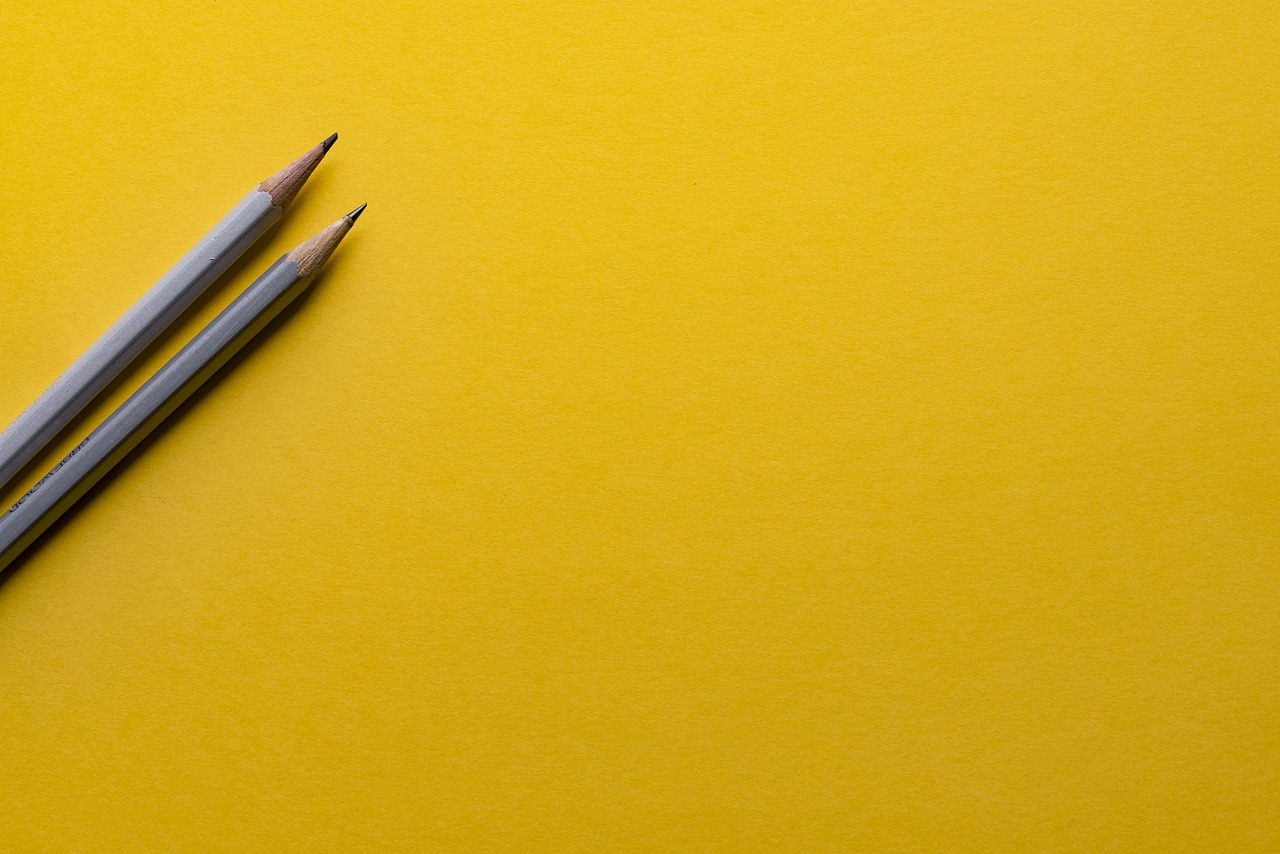
Observation Skills
This article explores techniques, materials, and tips for achieving realistic drawings and paintings, offering insights for both beginners and experienced artists aiming to enhance their skills in realism.
Realism is an artistic movement focused on depicting subjects as they appear in everyday life. This section delves into its history and significance in the art world.
Choosing the right materials is crucial for achieving realism. This section discusses various tools and mediums, including pencils, paints, and papers, that can enhance your artwork.
Graphite pencils are fundamental for drawing realism. This subsection highlights different grades of pencils and their applications for shading and detailing in realistic drawings.
Understanding the different types of graphite pencils helps artists select the right one for their needs. This section explains the characteristics of H, B, and F pencils.
Blending is essential for smooth transitions in realistic drawings. This section covers various blending techniques using tools like tortillons and blending stumps.
This subsection focuses on various painting mediums, such as oil, acrylic, and watercolor, discussing their unique properties and how they contribute to realistic effects.
Mastering techniques such as observation, proportion, and color mixing is vital for realism. This section provides practical tips and exercises to develop these skills.
Developing keen is crucial for realism. It's not just about seeing; it's about truly understanding what you see. When you look at an object, take a moment to absorb its details. Notice the way light interacts with the surface, the subtle variations in color, and the textures that give it depth. This is where the magic happens.
To enhance your observation skills, try these exercises:
- Contour Drawing: Focus on the outline of an object without looking at your paper. This technique sharpens your ability to see shapes and proportions.
- Negative Space Drawing: Instead of drawing the object itself, draw the space around it. This helps you understand the relationship between the subject and its surroundings.
- Daily Sketching: Dedicate time each day to sketch from life. Whether it's a plant on your desk or a bustling street scene, practice makes perfect.
By regularly practicing these exercises, you'll develop a more profound ability to capture the essence of what you see. Remember, observation is like a muscle; the more you train it, the stronger it gets. You might even find that you begin to notice details that you previously overlooked!
This section provides practical tips for artists looking to refine their realistic techniques, including the importance of practice, patience, and continuous learning.
Realism requires significant practice and patience. This subsection emphasizes the importance of dedicating time to hone your skills and improve your artwork over time.
Studying the works of master realist artists can provide valuable insights. This section encourages artists to analyze techniques and styles to inspire their own work.
Q: What is realism in art?
A: Realism is an artistic movement that aims to depict subjects as they appear in everyday life, focusing on accurate representation without idealization.
Q: Do I need expensive materials to create realistic art?
A: Not necessarily! While high-quality materials can enhance your work, it’s more important to master your techniques and practice regularly.
Q: How can I improve my observation skills?
A: Engage in exercises like contour drawing and negative space drawing, and make it a habit to sketch from life daily.

Proportions and Measurements
Understanding proportions is fundamental in realistic art. It’s like the backbone of your artwork, ensuring that everything looks just right. When you’re capturing a subject, whether it’s a human figure or a still life, getting the proportions correct can make the difference between a lifelike piece and something that feels off. But how do you achieve this? Well, it starts with observation and measurement.
One effective method to ensure accurate proportions is to use a technique called grid drawing. This involves dividing your reference image into a grid and then replicating that grid on your drawing surface. By focusing on one square at a time, you can break down complex shapes into manageable parts. It’s like using a map to navigate through a dense forest—you can’t see the whole path at once, but taking it step by step makes it easier to find your way.
Another popular approach is the use of a proportional divider. This handy tool allows you to measure distances and proportions accurately. Essentially, it’s a pair of calipers that can help you scale up or down your subject. Imagine trying to fit a large puzzle piece into a small space; if you don’t measure correctly, it just won’t fit! The proportional divider ensures that your pieces align perfectly, maintaining the integrity of your subject's proportions.
Furthermore, it’s crucial to understand the basic ratios that govern human anatomy or the structure of objects. For instance, the average adult human figure can be divided into eight head lengths. By keeping this ratio in mind, you can achieve a more realistic representation of the human form. Here’s a simple breakdown of the typical proportions:
| Body Part | Proportional Measurement |
|---|---|
| Head | 1 unit |
| Torso | 2-3 units |
| Legs | 4 units |
| Arms | 3 units |
By using these ratios as a guideline, you can create a more balanced and realistic representation of your subjects. But remember, these are just guidelines; art is subjective, and sometimes breaking the rules can lead to stunning results!
As you practice measuring and observing, don't forget to take your time. Patience is key here. It’s easy to rush through measurements, especially when you're eager to see your artwork come to life. However, taking those extra moments to ensure accuracy will pay off in the long run. Think of it as planting a seed; if you take the time to nurture it properly, you’ll eventually reap the rewards.
In conclusion, mastering proportions and measurements is not merely about following rules; it’s about developing a keen eye and understanding the relationship between different elements in your artwork. With practice and the right tools, you’ll find that achieving realism becomes an exciting and fulfilling journey.
- What is the importance of proportions in art?
Proportions are essential as they help create a sense of balance and realism in your artwork. Accurate proportions make subjects look more lifelike. - How can I improve my measurement skills?
Practice regularly using tools like proportional dividers and grids. Observational exercises can also enhance your ability to gauge proportions accurately. - Are there any shortcuts to achieving good proportions?
While there are techniques like grid drawing that can simplify the process, developing a good eye for proportion takes time and practice. There are no true shortcuts!

Tips for Enhancing Realism
When it comes to achieving stunning realism in your artwork, it's not just about the materials you use or the techniques you apply; it's also about the dedication and mindset you bring to your practice. Realism is a journey, not a destination, and there are several key tips that can help you enhance your skills and create breathtaking pieces that truly capture the essence of your subjects.
First and foremost, consistent practice is essential. Think of it like training for a marathon; you wouldn't expect to run 26 miles without putting in the time to build your endurance. The same applies to realism in art. Set aside time each week to draw or paint, focusing specifically on the elements that challenge you the most. Whether it's mastering shadows, understanding color theory, or perfecting your brush strokes, regular practice will lead to improvement. Remember, even the greatest artists were once beginners!
Another critical component is patience. Realism demands a level of detail and precision that can be time-consuming. It's easy to become frustrated if things don't turn out as planned, but this is where patience becomes your best ally. Take breaks when needed, and don't rush the process. Allow yourself the freedom to make mistakes, as they often lead to the most valuable lessons. Embrace the journey, and celebrate your progress, no matter how small.
Furthermore, studying the works of master artists can provide invaluable insights. Analyze their techniques, brushwork, and use of color. Try to replicate their works to understand their approach better. This doesn’t mean you should copy them directly, but rather use their methods as a springboard for your own style. Consider creating a
| Artist | Technique | Medium | Notable Work |
|---|---|---|---|
| John Singer Sargent | Loose brushwork for skin tones | Oil | Madame X |
| Andreas Gursky | Large-scale photography with digital manipulation | Photography | Rhein II |
| Chuck Close | Grid method for portraits | Acrylic | Big Self-Portrait |
In addition to these practices, it’s also important to seek out feedback on your work. Join art communities, whether online or in-person, where you can share your pieces and receive constructive criticism. This can help you see your work from a different perspective and identify areas for improvement. Remember, every artist has room to grow, and feedback is a crucial part of that process.
Lastly, never underestimate the power of continuous learning. Take workshops, attend classes, or watch online tutorials that focus specifically on realism. The art world is constantly evolving, and there are always new techniques to explore. By keeping your skills sharp and your knowledge fresh, you’ll find yourself continuously improving and discovering new ways to express your artistic vision.
In summary, enhancing realism in your artwork requires a combination of practice, patience, study, feedback, and a commitment to lifelong learning. Embrace the challenges that come your way, and remember that every stroke of the brush or pencil brings you one step closer to mastering the art of realism.
- What is the best medium for realistic painting?
It varies from artist to artist, but oil paints are often favored for their blendability and depth of color. Acrylics and watercolors can also achieve realistic effects with the right techniques. - How can I improve my observation skills?
Practice drawing from life as much as possible. Try to focus on the details, shapes, and shadows of your subjects. Regularly sketching everyday objects can significantly enhance your observation abilities. - Is realism the only style worth pursuing?
No! While realism is a valuable skill, exploring different styles can also enhance your creativity and artistic voice. Don’t hesitate to experiment with abstract, impressionistic, or other forms of art.

Practice and Patience
When it comes to mastering the art of realism, practice and patience are your best friends. You wouldn't expect to run a marathon without training, right? Similarly, becoming proficient in realistic drawing and painting requires a dedicated approach. Every stroke of your pencil or brush is a step towards improvement, and each piece you create is an opportunity to learn something new.
Imagine yourself standing in front of a blank canvas, the colors and forms of the world swirling in your mind. It can be daunting, but remember that every artist was once a beginner. The key is to embrace the process, allowing yourself the freedom to make mistakes and learn from them. Patience becomes your ally as you navigate through the complexities of light, shadow, and texture. It's not just about the final product; it's about the journey of self-discovery and skill enhancement.
Here are a few essential tips to keep in mind as you embark on your realism journey:
- Set Realistic Goals: Break your practice into manageable chunks. Instead of aiming to create a masterpiece every time, focus on specific skills, like shading or proportion.
- Regular Practice: Consistency is key. Even short daily sessions can yield significant improvements over time. Aim for at least 30 minutes of focused practice each day.
- Embrace Feedback: Seek constructive criticism from fellow artists or mentors. It can provide valuable insights that you might overlook.
- Document Your Progress: Keep a sketchbook or a digital portfolio. This will not only motivate you by showing how far you’ve come but also help you identify areas that need more attention.
Furthermore, it’s important to understand that realism is not just about replicating what you see; it’s about capturing the essence of the subject. This takes time, and the more you practice, the more you’ll develop your unique style. So, while you’re practicing, try to incorporate your own interpretation. This will not only make your work stand out but also keep your creative spirit alive.
In conclusion, remember that every stroke, every layer of paint, and every attempt at capturing realism is a step towards mastery. With practice and patience, you will not only enhance your skills but also discover a deeper appreciation for the art form. Embrace the process, and let your passion for realism shine through your artwork.
Q: How often should I practice to see improvement?
A: Aim for at least 30 minutes a day. Consistency is more important than the length of each session.
Q: What should I focus on during my practice sessions?
A: Focus on specific skills, such as shading, proportions, or color mixing, rather than trying to complete a full piece each time.
Q: Is it necessary to take formal art classes to improve?
A: While classes can provide valuable guidance, self-study and practice can also lead to significant improvement. Utilize online resources and tutorials.
Q: How can I find inspiration for realistic subjects?
A: Look around you! Everyday life is full of potential subjects. You can also study the works of master artists for inspiration.

Learning from Masters
When it comes to mastering realism in art, one of the most effective strategies is to learn from the great masters. These artists have paved the way for realism, showcasing techniques and styles that have stood the test of time. Think of it like learning a new language; you wouldn't just dive into conversation without first listening to native speakers, right? Similarly, immersing yourself in the works of renowned artists can provide invaluable insights into the nuances of realistic representation.
Take a moment to reflect on some of the iconic figures in the world of realism, such as Gustave Courbet, Jean-François Millet, and Andrew Wyeth. Each of these artists has a unique approach, yet they all share a commitment to portraying life as it truly is. By studying their work, you can uncover the secrets behind their techniques. For example, Courbet's bold brushstrokes and Millet's focus on rural life provide a fascinating glimpse into how different subjects can be rendered realistically.
To effectively learn from these masters, consider the following strategies:
- Analyze Their Techniques: Spend time closely examining their brushwork, color palettes, and composition. What makes their work stand out? How do they create depth and dimension?
- Recreate Their Work: Try to replicate a piece from a master artist. This exercise will challenge you to pay attention to details you might otherwise overlook. Don't worry about making it perfect; focus on the process and what you learn along the way.
- Read About Their Lives: Understanding the context in which these artists worked can provide deeper insights into their motivations and choices. Explore their biographies and the art movements they were part of.
Additionally, visiting museums or galleries can be a transformative experience. Standing in front of a masterwork allows you to appreciate the scale, texture, and intricacies that photographs simply cannot convey. If possible, attend workshops or lectures that focus on these artists. Engaging with fellow art enthusiasts can also spark new ideas and perspectives, enriching your own artistic journey.
In conclusion, learning from the masters is not just about imitation; it's about inspiration and growth. As you delve into their works, remember to keep an open mind and allow their creativity to fuel your own. After all, every great artist was once a beginner who dared to learn from those who came before them.
Q: How can I start learning from the masters?
A: Begin by selecting a few artists whose work resonates with you. Study their techniques, try to replicate their art, and read about their lives and influences.
Q: Is it necessary to copy masterworks to learn?
A: While copying can be a helpful exercise, it's equally important to develop your own style. Use what you learn from the masters to inform and inspire your unique artistic voice.
Q: Where can I find resources on master artists?
A: Art history books, online courses, and museum websites are excellent resources. Many museums also offer virtual tours and lectures that can deepen your understanding.
Frequently Asked Questions
- What is realism in art?
Realism is an artistic movement that aims to depict subjects as they appear in everyday life, focusing on ordinary scenes and people. It emerged in the mid-19th century as a reaction against romanticism and idealism, emphasizing accuracy and truthfulness in representation.
- What materials do I need for realistic drawing?
To achieve realism in drawing, you will need a variety of materials, including high-quality graphite pencils (ranging from H to B grades), blending tools like tortillons, and suitable paper that can handle detailed work. These tools help create smooth transitions and fine details essential for realistic art.
- How can I improve my observation skills for drawing?
Improving observation skills involves practice and exercises that train your eye to notice details. Try drawing from life, focusing on light and shadow, and breaking down complex subjects into simpler shapes. Regularly practicing these techniques can greatly enhance your ability to replicate what you see.
- What are the best painting mediums for realism?
For realistic painting, popular mediums include oil, acrylic, and watercolor. Each has unique properties: oil paints allow for rich textures and blending, acrylics dry quickly and are versatile, while watercolors can create delicate washes and fine details. Choosing the right medium depends on your personal style and the effects you want to achieve.
- How important is practice in mastering realism?
Practice is absolutely crucial in mastering realism. Like any skill, the more you draw and paint, the better you will become. Dedicate time to practice regularly, be patient with your progress, and don't hesitate to experiment with different techniques to refine your skills.
- Can studying master artists help improve my realism?
Absolutely! Analyzing the works of master realist artists can provide valuable insights into techniques, color use, and composition. By understanding their methods, you can incorporate similar strategies into your own artwork, which can significantly enhance your realism skills.



















